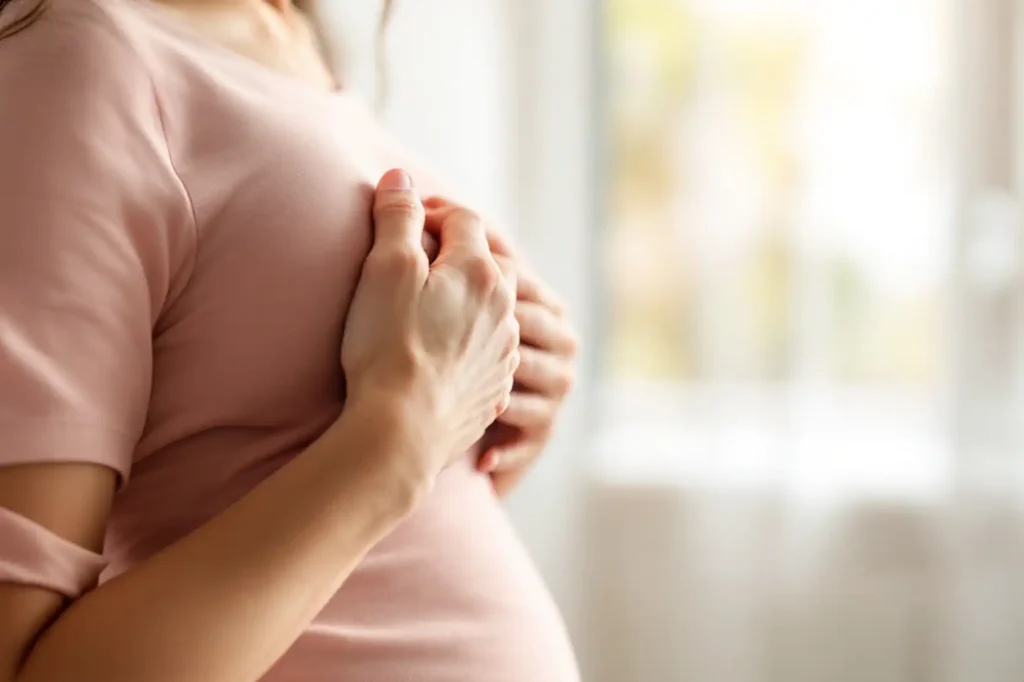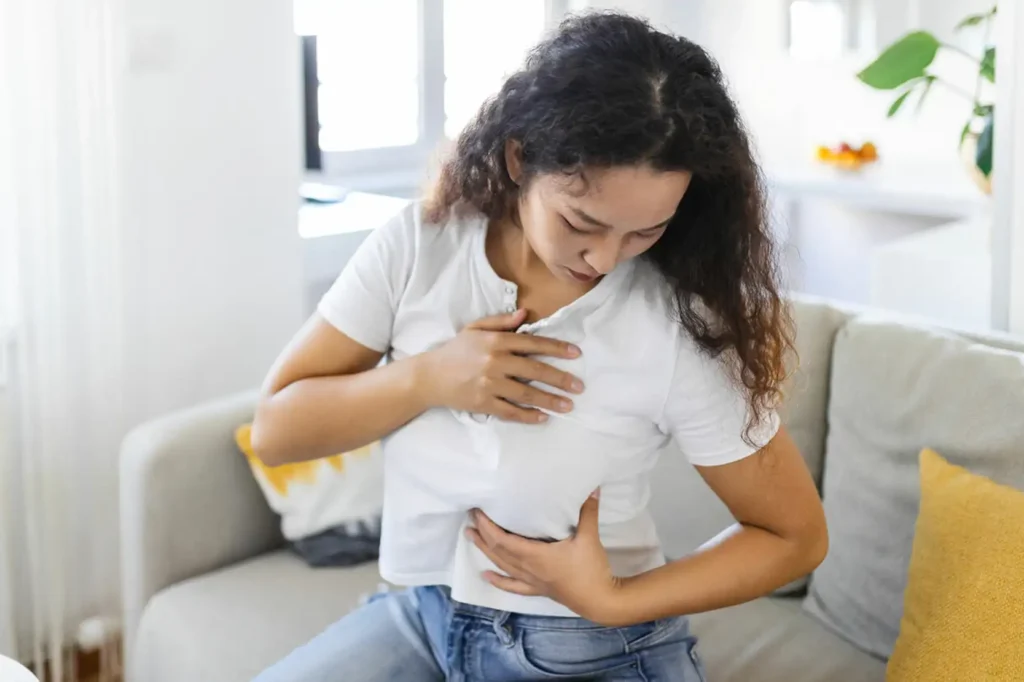This detailed guide explains how to identify benign Fibrocystic Breast Disease After Menopause, when to seek medical help, and how lifestyle and hormone adjustments can improve breast health. With expert insights, this article helps women understand and manage fibrocystic breast changes after menopause while reducing anxiety about breast cancer. Stay informed and protect your breast health with the right knowledge.
Introduction to Fibrocystic Breast Disease After Menopause:
Yes, fibrocystic breast disease can still occur after menopause, but it usually becomes less common and less severe due to the natural decline in estrogen and progesterone levels.
Many women believe that once menopause arrives, breast changes like lumps, pain, or tenderness completely disappear. However, that’s not always true. While fibrocystic breast changes are strongly linked to hormonal fluctuations during reproductive years, some women continue to experience them even after menopause, especially those on hormone replacement therapy (HRT) or with higher estrogen sensitivity.
If you’ve noticed breast lumps, discomfort, or thickened tissue post-menopause, you’re not alone. Understanding fibrocystic breast disease after menopause helps reduce unnecessary worry and ensures timely medical evaluation. Let’s break down what it means, why it happens, and how to manage it safely.
However, since breast cancer risk increases with age, all new lumps should be checked.
- Advertisement -
What Is Fibrocystic Breast Disease After Menopause:
Fibrocystic breast disease (also called fibrocystic breast changes) refers to noncancerous lumps, cysts, or fibrous tissue that make breasts feel lumpy or rope-like. Normally, these changes are more noticeable before menopause because hormones like estrogen and progesterone stimulate breast tissue.
After menopause, hormone levels decline, and most women see fewer fibrocystic changes. However, some still develop postmenopausal breast lumps due to residual hormonal activity, use of hormone therapy, or natural variations in breast tissue. The condition is benign, meaning it’s not cancer, but it can mimic the symptoms of breast cancer so medical evaluation is always essential.

Causes of Fibrocystic Breast Disease After Menopause:
The main reason fibrocystic breast changes decrease after menopause is the drop in hormones. But in some cases, the following factors may trigger them. It’s important to remember that postmenopausal breast lumps should always be checked by a doctor, since breast cancer risk increases with age.
- Hormone Replacement Therapy (HRT): Estrogen and progesterone supplementation can stimulate breast tissue and lead to cysts or lumps.
- Residual Hormonal Activity: Even after menopause, the body produces small amounts of hormones that may affect breast tissue.
- Genetic and Lifestyle Factors: Women with a family history of fibrocystic changes or those with higher body fat (which produces estrogen) may continue experiencing them.
Symptoms of Fibrocystic Breasts After Menopause:
Most women with fibrocystic breast disease after menopause notice. Unlike in younger women, cyclical pain is less common post-menopause. If the lump feels hard, irregular, or is associated with skin changes, nipple discharge, or persistent pain, it needs urgent medical evaluation to rule out cancer.
- Lumpy or rope-like breast texture
- Cysts (fluid-filled sacs) that feel movable under the skin
- Tenderness or mild pain, especially if on HRT
- Thickened tissue in certain areas of the breast
Diagnosis and Tests:
Since breast cancer risk rises after menopause, diagnosis of fibrocystic breasts must be thorough. Even though fibrocystic changes are benign, regular screening is vital for women over 50.
- Clinical Breast Exam – feeling for lumps and changes in texture
- Mammogram – X-ray imaging to detect cysts, calcifications, or abnormalities
- Ultrasound – to distinguish between fluid-filled cysts and solid lumps
- Biopsy – if a suspicious lump is found, a small sample is tested for cancer
Treatment Options for Fibrocystic Breast Disease After Menopause:
Most cases don’t require aggressive treatment, but management focuses on relief and monitoring. Always consult a healthcare professional before making changes, as management varies from woman to woman.
- Observation & Monitoring: If lumps are benign, doctors may simply watch over time.
- Lifestyle Changes: Reducing caffeine, salt, and fatty foods may help reduce breast discomfort.
- Hormone Adjustment: For women on HRT, adjusting the dosage may ease symptoms.
- Pain Relief: Over-the-counter pain relievers (ibuprofen, acetaminophen) can help.
- Cyst Drainage: If a cyst is large or painful, doctors can drain the fluid.
When to See a Doctor Fibrocystic Breast Disease:
Even though fibrocystic breast disease after menopause is typically harmless, you should seek medical advice if you notice. Early evaluation ensures peace of mind and helps detect serious conditions in time.
- A new lump that does not go away
- Hard, irregular, or immobile breast masses
- Bloody or unusual nipple discharge
- Skin dimpling, redness, or swelling
FAQ
Most frequent questions and answers
Yes, it can, though it is less common and often linked to hormone replacement therapy.
No, they are benign. However, since breast cancer risk increases with age, all new lumps should be checked.
Yes, HRT can stimulate breast tissue and cause cysts or tenderness.
Conclusion:
While it is a benign condition, new breast lumps should never be ignored because breast cancer risk increases with age. In summary, fibrocystic breast disease after menopause is less common but can still affect women, especially those using hormone replacement therapy or with residual hormonal activity. Regular check-ups, mammograms, and medical guidance are essential to stay safe. Understanding the causes, symptoms, and treatment options helps women manage changes with confidence and maintain breast health well beyond menopause.








